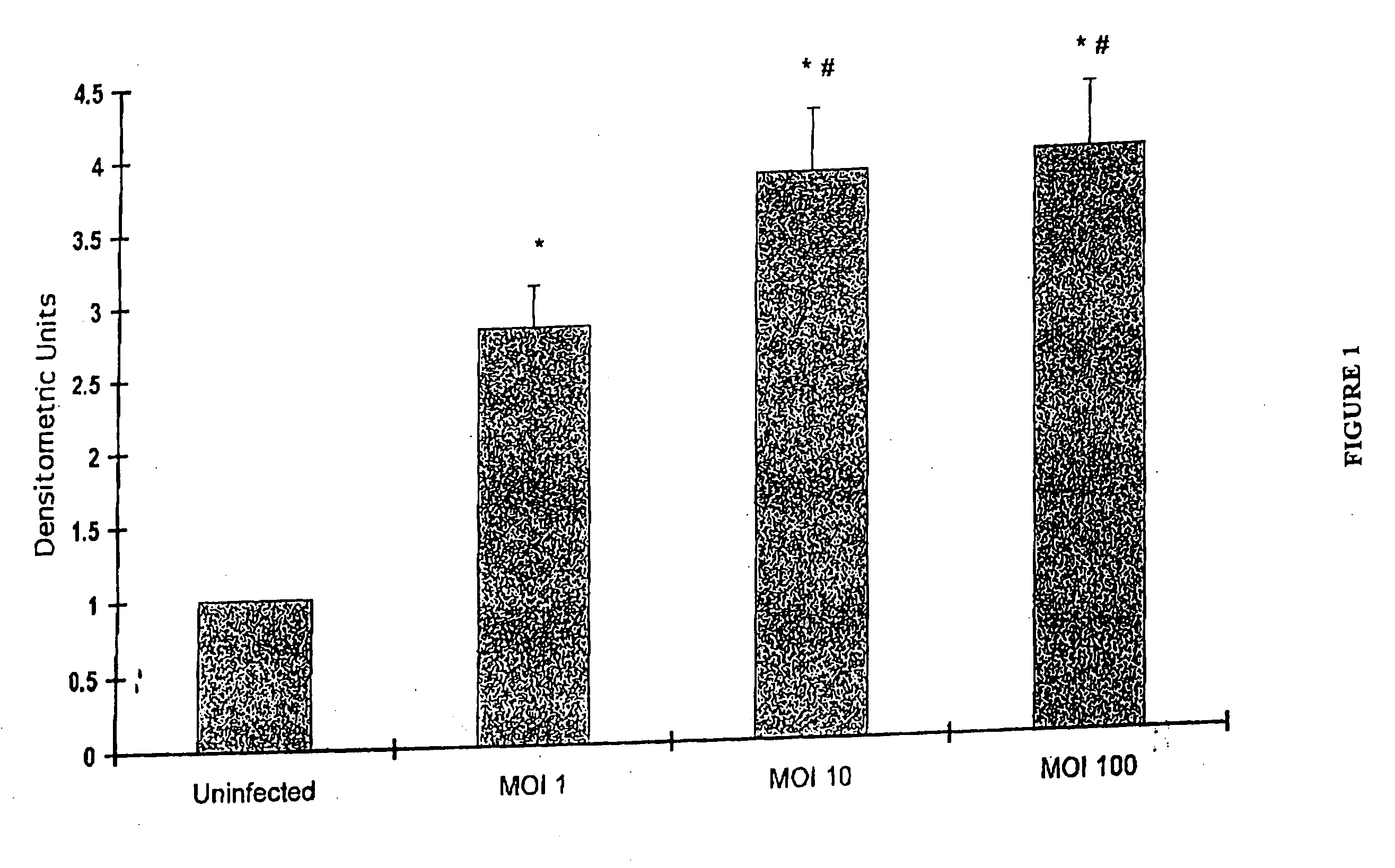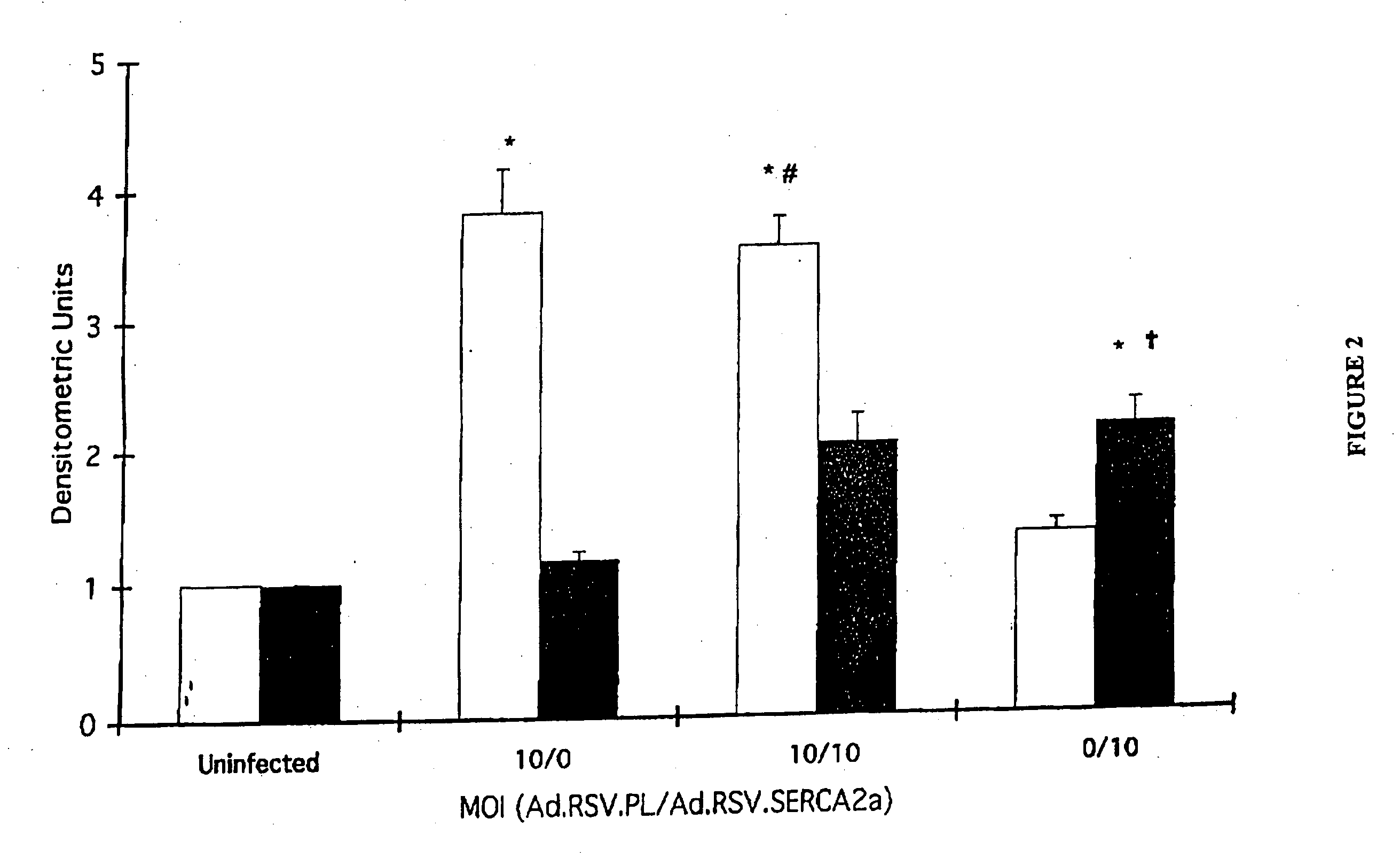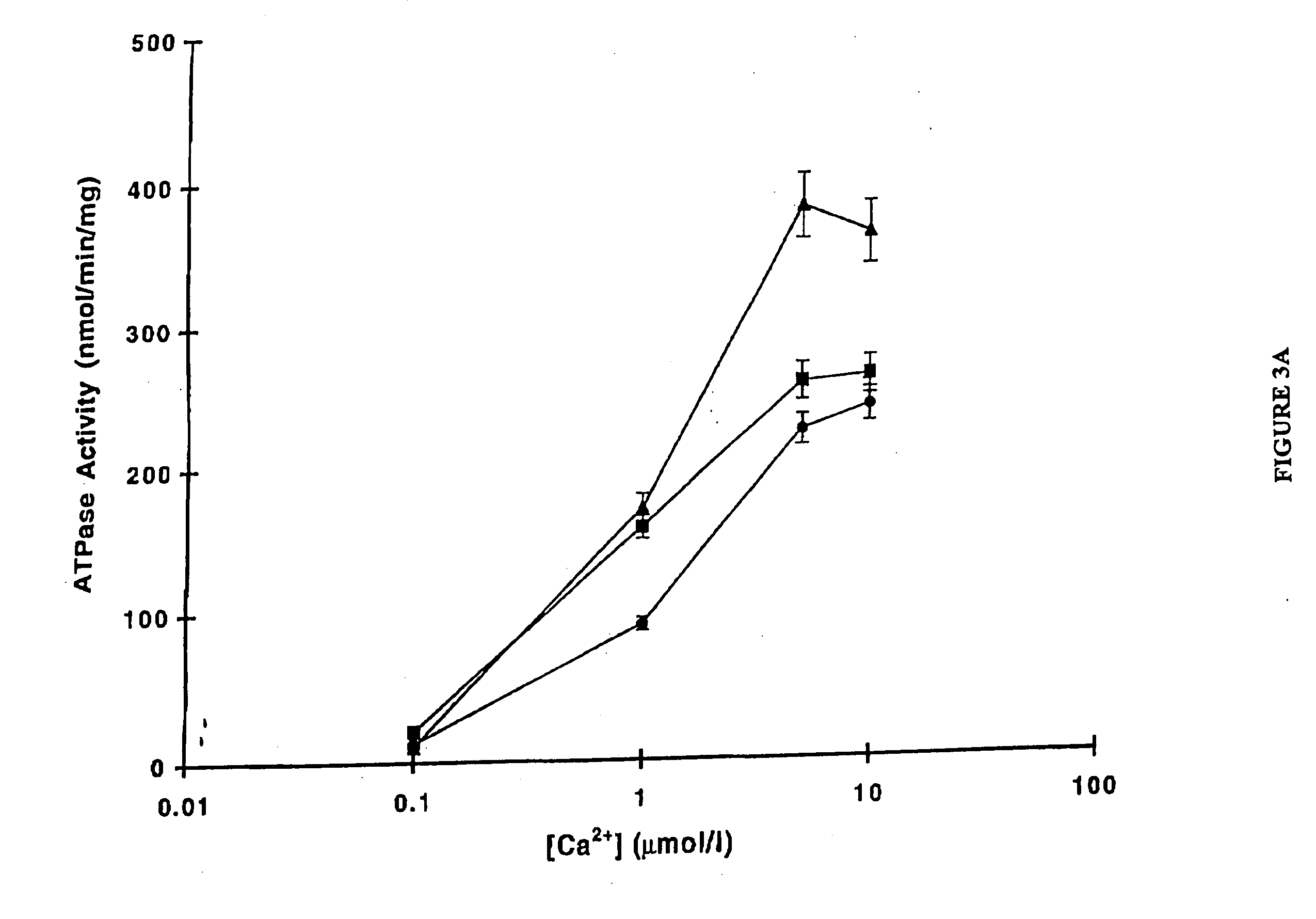Treating heart failure
- Summary
- Abstract
- Description
- Claims
- Application Information
AI Technical Summary
Benefits of technology
Problems solved by technology
Method used
Image
Examples
example 13
Specificity of AAV6 to Heart Tissue
[0215] We tested the ability of different serotypes of AAV to deliver an exogenous gene to the heart. Using the cross-clamping technique described below, we injected rat hearts with 1012 genomes of different AAV subtypes (1-6) carrying beta galactosidase under the CMV promoter. Rats were anesthetized with intraperitoneal pentobarbital and placed on a ventilator. The chest was entered from the left side through the third intercostal space. The pericardium was opened and a 7-0 suture placed at the apex of the left ventricle. The aorta and the pulmonary artery were identified. A 22 G catheter containing 200 μl of adenovirus was advanced from the apex of the left ventricle to the aortic root. The aorta and the pulmonary arteries were clamped distal to the site of the catheter and the solution injected. The clamp was maintained for 10 seconds, while the heart pumped against a closed system (isovolumically). This allows the solution that contains the ad...
example 14
Gene Transfer in Pigs and Sheep
[0217] Percutaneous antegrade intracoronary gene transfer with concomitant coronary vein blockade (CVB) was performed in both sheep and swine models. Using these large animal models we have developed a new technique of gene transfer. The left anterior descending artery (LAD) or the left circumflex artery (LCX) was cannulated and occluded with a standard angioplasty balloon. One-minute ischemic preconditioning in both the LAD and the LCX distribution (by blockade of the LAD and the LCX) was performed to allow increased viral dwell time in this model. Following the preconditioning protocol, the great coronary vein (GCV) or one of its branches was cannulated and temporarily occluded with a standard wedge balloon catheter. CVB was performed globally, implying occlusion of the proximal GCV and thus occluding venous drainage in both the LAD and LCX distribution, or selectively, in which case the anterior interventricular vein (AIV) was occluded during LAD d...
example 15
Restoration of Normal Ventricular Function Following Gene Transfer of SERCA2a using AAV6.CMV.SERCA2a
[0220] This study was carried out according to the Guidelines for the Care and Use of Laboratory Animals, approved by the Massachusetts General Hospital, Subcommittee on Research Animal Care. In a first set of experiments, 22 normal pigs underwent creation of mitral valve regurgitation (MVR). A carotid approach was used to insert a percutaneous biotome through an 8 Fr sheath. The biotome was advanced in a retrograde fashion through the aortic valve and through the left ventricular cavity towards the posterior wall. The cordae of the posterior papillary muscle were cut to create mitral valve regurgitation. The advancement and the positioning of the catheter and the cordae were performed under 2D echocardiographic monitoring. Color Doppler echocardiography was used to quantify the degree of MVR for inter-animal homogeneity of injury. Serial echocardiograms were performed in anesthetize...
PUM
| Property | Measurement | Unit |
|---|---|---|
| Flow rate | aaaaa | aaaaa |
| Therapeutic | aaaaa | aaaaa |
Abstract
Description
Claims
Application Information
 Login to View More
Login to View More - R&D
- Intellectual Property
- Life Sciences
- Materials
- Tech Scout
- Unparalleled Data Quality
- Higher Quality Content
- 60% Fewer Hallucinations
Browse by: Latest US Patents, China's latest patents, Technical Efficacy Thesaurus, Application Domain, Technology Topic, Popular Technical Reports.
© 2025 PatSnap. All rights reserved.Legal|Privacy policy|Modern Slavery Act Transparency Statement|Sitemap|About US| Contact US: help@patsnap.com



